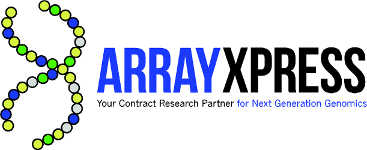
Next Generation Genomics
ArrayXpress brings the latest, most accurate, and most efficient technologies to your research or commercialization project.
We understand your project is unique and your samples are precious. At ArrayXpress we pride ourselves in providing first-in-class ‘Omics services. No project is too small or too large- we will work with your team to find the best solution to answer your biological question(s). We value collaboration and partnership, when you work with us your research and development goals become our goals. Our dedicated PhD level scientific staff/team enjoys, most of all, doing Science.
We continuously monitor the market for technologies and products that bring either incremental improvement or radical innovation to the field. Sometimes new technology allows us to do things a little more accurately or a little more cost efficiently. Other times disruptive technology completely shifts the paradigm for how discovery or development can be approached. In both cases, the methods and techniques must be adapted and optimized for the capabilities afforded. It also goes without saying however, that many times new technology is just that, new technology, and may not be appropriate for your needs.
Revolutionary approaches to DNA sequencing have significantly impacted our ability to query large amounts of nucleic acid sequence, leading to a scientific revolution in Biology and Medicine. These platforms collectively known as massive parallel DNA sequencing encompass a combination of sophisticated enzymology, chemistry, high-resolution optics, nanotechnology, hardware, and software engineering. Flexible and scalable performance levels allow a wide range of applications.
Here we summarize our capabilities in several areas, with emphasis on NGS applications.
Available Next Generation Sequencing Platforms:
- Life Technologies Ion Proton
- Illumina HiSeq 2500
- Illumina NextSeq 500
- Illumina MiSeq
- PacBio RS SMRT
- De novo Genome Scaffold Construction
- mRNA sequencing
- miRNA sequencing
- Sequencing of other non-coding RNA species
- Genome assemblies
- Whole or partial exome re-sequencing
- Targeted genome and transcriptome (re-)sequencing using both amplification- and capture-based methods
- Biomarkers: Variant Discovery and Calling (SNP’s, Insertions, Deletions, Gene Duplications, etc)
- Metagenomic Sequencing
- CHiP-Seq – Identifying and characterizing Protein-DNA interactions
- Methylation Sequencing
- DNase-Seq – Sequencing of DNase I hypersensitive sites
- FAIRE-Seq (Formaldehyde-Assisted Isolation of Regulatory Elements)
- CLIP-Seq (Cross-Linking Immunoprecipitation, for Genome-wide RNA binding sites)
- Experimental Design and Consultation
- Read Quality Control
- Biomarker and Variant Discovery and Genotyping (Variant Calling)
- RNA-seq Analysis
- Differential Gene Expression
- eQTL Analysis
- Genome Annotation
- Coding sequences
- Non-coding RNA
- Gene Ontology
- Pathway Analysis
- Visualization tools for results display and graphic summarization (Heatmaps, GO Graphs)
- Cross-platform gene expression integration
- Development of customized bioinformatics pipelines
- iCOP™: ArrayXpress’ proprietary integrated Systems Biology platform (integration and co-analyses of genetic, transcriptomic, epigenetic, proteomic and metabolomic data sets)
- DNA and RNA Extraction
- Genomic DNA/RNA purification from plant tissues, bacteria and other microorganisms
- Plasmid DNA Purification
- In vitro transcription
- Quality Control
- Agarose and Polyacrylamide Gel Electrophoresis (PAGE)
- Nanodrop ND-1000 - Spectrophotometer
- Agilent 2100 Bioanalyzer Lab-on-a-Chip Quality Control Analysis: Integrity, Sizing, Quantification from DNA to protein
- Kappa qPCR Sequencing Library Quantification
- Nucleic Acid Analysis
- Sanger sequencing
- Northern blot
- Southern blot
- Electrophoretic mobility shift assays
- DNase I footprint assays
- Molecular Cloning
- Restriction enzyme digestion and ligation
- TA cloning
- PCR cloning
- TOPO and Gateway cloning
- Blunt end cloning
- Long fragment cloning
- Real-Time PCR
- Absolute quantification
- Relative quantification
- Allelic discrimination
- Presence/Absence for detection of specific targets
- Protein Services
- Heterologous Protein Expression
- Bacterial systems
- Eukaryotic
- Fungal
- Mammalian
- Plant
- Heterologous Protein Purification
- Poly-Histidine tagged
- Glutathione S-transferase tagged
- Affinity Separation
- High Performance Liquid Chromatography (HPLC)
- Protein Analysis
- Native and denaturing (SDS) PAGE
- Western blotting
- Chemiluminescent detection
- Fluorescent detection
- ELISA
- Enzymatic Assays (solution and in-gel native PAGE assays)
- Heterologous Protein Expression
- Plant Genetic Engineering
- Plant transformation
- Agrobacterium-mediated transformation
- Microparticle bombardment
- Gene expression
- Synthetic promoter design
- Engineering of transcriptional trans-modulators
- Multigene transfer and large constructs assembly for gene stacking
- Site-specific transgene integration: see Emerging technologies
- Transient gene expression assays
- Plant transformation
- Metabolomics
- Biochemical identification
- Quantification through statistical analysis
- Data interpretation
- Emerging Technologies – evolving tools for Genome Engineering and Targeted Gene Manipulation
- TALEs: TAL Effectors-based Nucleases and Transcription Factors
- Modulation of gene expression
- Site specific, directed homologous recombination for targeted insertions or deletions
- CRISPR/Cas9: Site specific, directed gene mutagenesis, knock-outs and deletions; targeted insertions or gene replacements
- TALEs: TAL Effectors-based Nucleases and Transcription Factors
- Functional Genetics
- Protein-Protein interaction
- Yeast two-hybrid screening
- Split-ubiquitin yeast two-hybrid
- In planta Förster resonance energy transfer (FRET) and Bimolecular fluorescence complementation (BiFC)
- RNAi and other non-coding RNA – siRNA, shRNA, miRNA, lncRNA analyses
- Co-suppression
- Promoter screening: Quantitatively test and compare promoter constructs over-time in a plant-tissue based system using a fluorescent reporter gene. This semi high-throughput method allows for promoter constructs containing various control elements to be tested in the host tissue before the timely process of stable transformation.
- VIGS (Virus-Induced Gene Silencing): Uses the plant’s natural homology-based defense mechanisms triggered by viral infections as a reverse genetics tool for studying gene function through gene silencing.
- Protein-Protein interaction
Contact us for more information about how AX can assist you in accomplishing your research goals.
